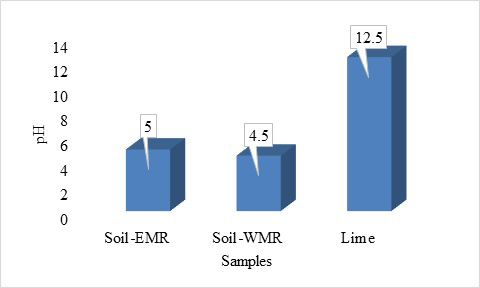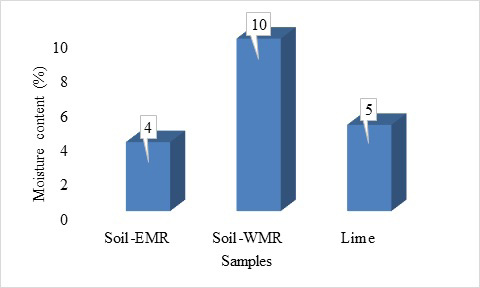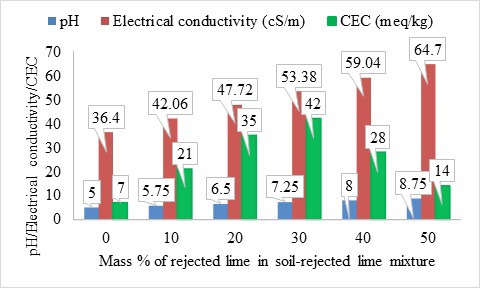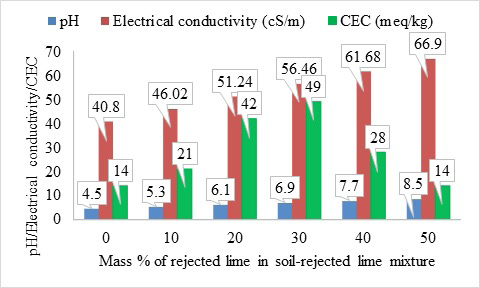Rejected Lime as Soil Conditioner for Growth of Vigna radiata: A Case Study from Mountainous Ranges of Dhofar Governorate, Oman
Rejected Lime as Soil Conditioner for Growth of Vigna radiata: A Case Study from Mountainous Ranges of Dhofar Governorate, Oman
Amna Ali Mohammed Makoof Zabanoot, Al Wafaa Ahmed Suhail Qatan, Amal Salim Mahad Hubais, Khadijah Hamid Musallam Bait Said and Selvaraju Sivamani*
pH of samples (Soil-EMR: Soil sample collected from eastern mountain range of Dhofar Governorate; Soil-WMR: Soil sample collected from western mountain range; Lime: Rejected lime).
Electrical conductivity of samples (Soil-EMR: Soil sample collected from eastern mountain range of Dhofar Governorate; Soil-WMR: Soil sample collected from western mountain range; Lime: Rejected lime).
Moisture content of samples (Soil-EMR: Soil sample collected from eastern mountain range of Dhofar Governorate; Soil-WMR: Soil sample collected from western mountain range; Lime: Rejected lime).
Particle size of samples (Soil-EMR: Soil sample collected from eastern mountain range of Dhofar Governorate; Soil-WMR: Soil sample collected from western mountain range; Lime: Rejected lime).
Effect of mass % of rejected lime in soil-rejected lime mixture on pH, electrical conductivity, and CEC of samples for eastern mountain range of Dhofar Governorate.
Effect of mass % of rejected lime in soil-rejected lime mixture on pH, electrical conductivity, and CEC of samples for western mountain range of Dhofar Governorate.
Micrographs of growth of green gram plant at optimized mass % of rejected lime in soil-rejected lime mixture.















